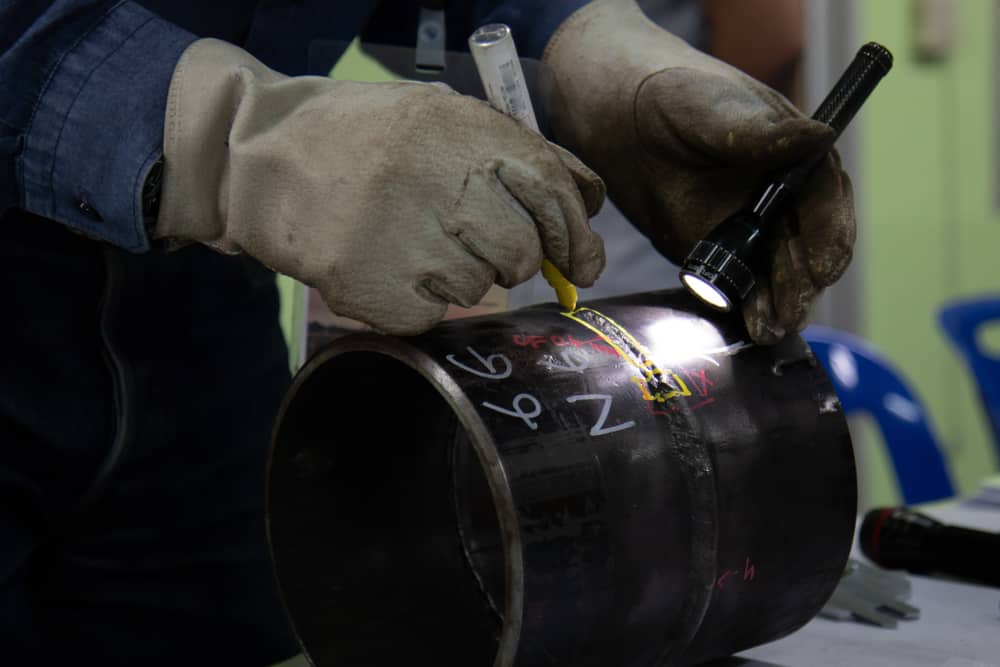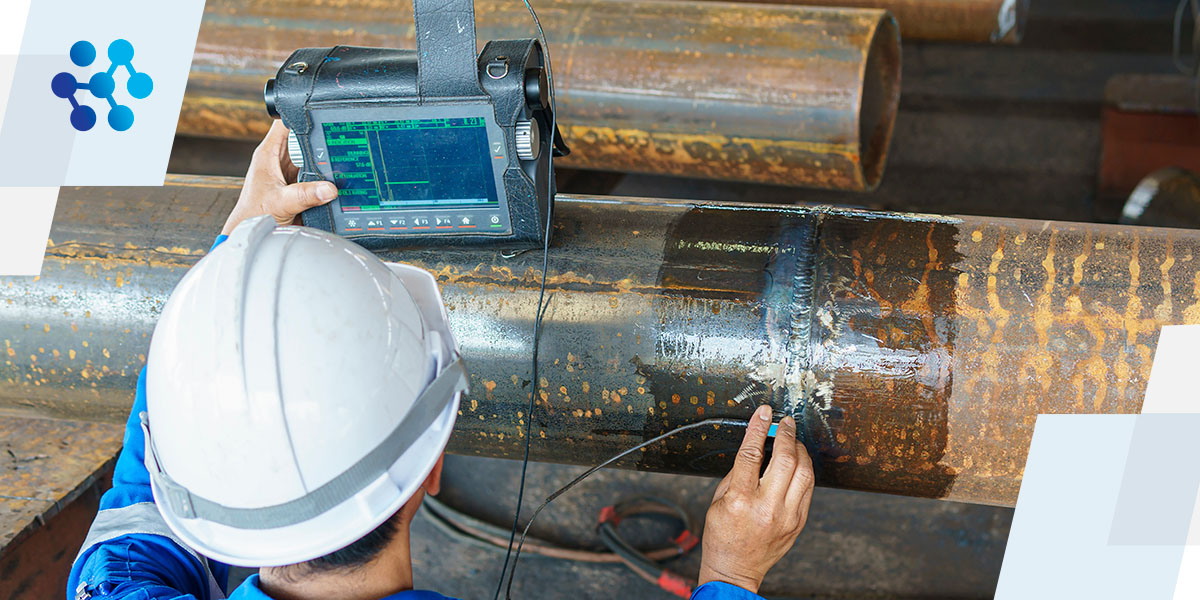Comprehending the Process of Welding Inspection Racine for Ideal Results
Cutting-edge Strategies to Fillet Weld Examination and Screening: Enhancing Weld Quality and Conformity Criteria
In the world of welding, the top quality and honesty of fillet welds play a critical function in making certain the structural soundness and reliability of various commercial parts. With the consistent drive for enhanced performance and conformity with stringent criteria, the expedition of cutting-edge strategies to fillet weld evaluation and screening has actually ended up being important.
Advanced Non-Destructive Testing Methods
Utilizing advanced technologies, advanced non-destructive screening techniques play an essential function in ensuring the honesty and top quality of fillet welds. These methods, such as phased array ultrasonic screening (PAUT) and magnetic bit testing (MPT), deal comprehensive understandings right into the weld's inner structure without causing any kind of damage to the material. PAUT, for example, makes use of numerous ultrasonic aspects to examine the weld from different angles, offering an extensive visualization of prospective defects like absence of blend or splits.
Similarly, MPT works in identifying surface-breaking flaws by applying a magnetic field and iron particles to the weld area. This method is specifically helpful for recognizing suspensions that might compromise the weld's strength. By employing these sophisticated non-destructive screening techniques, weld examiners can accurately assess the quality of fillet welds, making sure compliance with sector standards and guidelines. The ability to discover imperfections beforehand not just enhances weld top quality however also avoids pricey rework or failings in structural honesty, highlighting the value of these cutting-edge testing approaches in welding examinations.
Robotics and Automation in Examination
The assimilation of robotics and automation has actually revolutionized the assessment process for fillet welds, enhancing efficiency and precision in high quality analysis. Robotics provide accurate control and repeatability in evaluating welds, making certain trusted and regular results. Automated systems can be programmed to comply with certain examination courses, making certain thorough protection of welds and decreasing the threat of human error.
Robot assessment systems geared up with advanced sensors can detect and measure weld functions with high precision, giving comprehensive data for analysis. These systems can recognize flaws such as fractures, absence of fusion, and porosity, making it possible for prompt rehabilitative activities to be taken. In addition, robotics and automation enable real-time information collection and evaluation, providing instant feedback to drivers and assisting in fast decision-making processes.
In addition, using robotics and automation in fillet weld evaluation boosts total efficiency by decreasing assessment times and raising evaluation throughput. By streamlining the inspection process, makers can make certain weld high quality and compliance criteria are met effectively, ultimately leading to set you back financial savings and enhanced product high quality.
Making Use Of Artificial Knowledge for Analysis
Expert system plays an essential role in enhancing the performance and accuracy of analysis in fillet weld evaluation procedures. By harnessing the power of AI, assessors can enhance the analysis of weld quality and conformity criteria, bring about much more dependable and precise outcomes. AI algorithms can swiftly process vast amounts of data from weld examinations, identifying issues or variances that may be testing to relate to the nude eye. This innovative modern technology allows real-time monitoring of weld quality, permitting for instant corrective actions to be taken if any type of concerns are discovered.
Additionally, AI systems can learn from past evaluation information, constantly boosting their capability to identify potential flaws and discrepancies in fillet welds. This flexible knowing capacity improves the overall high quality control process, minimizing the likelihood of human error and making his explanation sure that welds fulfill the called for standards. By incorporating fabricated knowledge right into fillet weld evaluation, markets can attain greater degrees of efficiency, consistency, and conformity in their inspection methods.
Portable Devices for On-Site Evaluation
 Enhancing area inspection efficiency, the fostering of mobile tools changes on-site evaluation procedures for fillet welds. These devices use adaptability and comfort, permitting examiners to carry out comprehensive exams in numerous locations, including remote or tough settings. Mobile devices such as ultrasonic testing gadgets, magnetic fragment examination tools, and electronic radiography systems give real-time information and high-resolution imaging capabilities, enabling fast decision-making and prompt responses on weld top quality.
Enhancing area inspection efficiency, the fostering of mobile tools changes on-site evaluation procedures for fillet welds. These devices use adaptability and comfort, permitting examiners to carry out comprehensive exams in numerous locations, including remote or tough settings. Mobile devices such as ultrasonic testing gadgets, magnetic fragment examination tools, and electronic radiography systems give real-time information and high-resolution imaging capabilities, enabling fast decision-making and prompt responses on weld top quality.One substantial benefit of mobile devices is their capability to improve assessment procedures, decreasing downtime and enhancing overall productivity. Inspectors can conveniently move these devices to various task sites, eliminating the demand for moving hefty equipment or elements to off-site facilities. Additionally, the transportability of these devices promotes cost-effectiveness by reducing transportation expenditures and speeding up evaluation timelines.
Furthermore, the use of mobile devices for on-site evaluation promotes aggressive top quality control actions, as examiners can promptly determine and resolve any kind of potential welding flaws or discrepancies. By integrating these cutting-edge technologies into on-site examination practices, welding specialists can make certain conformity with market requirements and boost weld high quality, eventually leading to enhanced structural stability and security in numerous welding applications.
Combination of Data Management Solution
Having optimized on-site evaluation processes via the application of portable tools, the next phase involves the seamless integration of information management systems to better boost performance and data analysis abilities in fillet weld assessment and screening. Welding Inspection Racine. By integrating information monitoring systems right into the evaluation procedure, organizations can improve information collection, storage, and analysis. This assimilation permits real-time monitoring of weld quality, immediate recognition of flaws, and timely decision-making to rectify any concerns that might arise throughout the examination process
The integration of information administration systems enables smooth communication in between different stakeholders find more info involved in the assessment process, cultivating partnership and enhancing general quality control actions. Ultimately, the assimilation of information management systems offers to raise the standards of fillet weld assessment and testing, ensuring compliance with sector policies and boosting weld high quality.
Verdict
To conclude, cutting-edge methods to fillet weld examination and testing have actually considerably boosted weld high quality and compliance standards. Advanced non-destructive screening methods, robotics, automation, expert system, mobile devices, and data management systems have actually transformed the method weld evaluations are performed. By utilizing these technologies, industries can make sure that welds meet the called for top quality criteria and guidelines, ultimately boosting overall performance and safety and security in welding procedures.

By employing these sophisticated non-destructive screening methods, weld examiners can precisely assess the high quality of fillet welds, ensuring compliance with sector standards and laws. Portable devices such as ultrasonic screening devices, magnetic bit evaluation equipment, and electronic radiography systems offer real-time data and high-resolution imaging capabilities, making it possible for quick decision-making and prompt responses on weld top quality.
Having actually optimized on-site assessment procedures via the application of mobile tools, the following phase includes the seamless integration of data monitoring systems to additionally improve effectiveness and information evaluation abilities in fillet weld assessment and testing (Welding Inspection Racine). Inevitably, the combination of information management systems offers to boost the requirements of Get More Info fillet weld assessment and testing, guaranteeing compliance with sector laws and boosting weld quality
 In conclusion, ingenious methods to fillet weld assessment and testing have considerably boosted weld quality and conformity criteria.
In conclusion, ingenious methods to fillet weld assessment and testing have considerably boosted weld quality and conformity criteria.